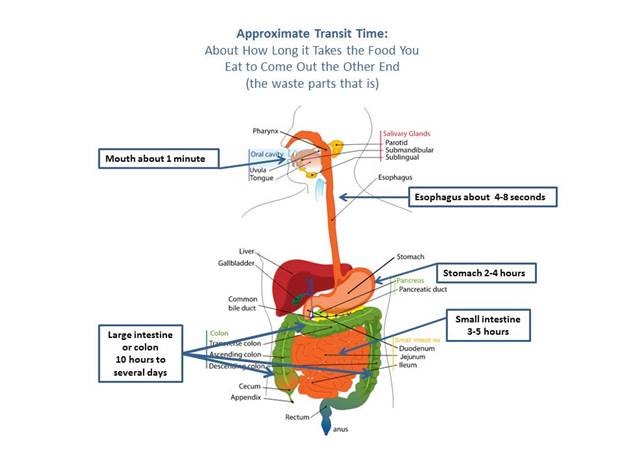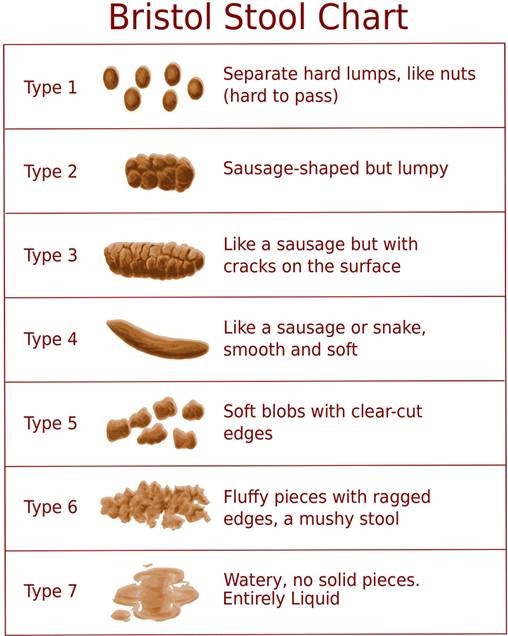A Corny Way to Check Your Bowel Transit Time
(Optionally you can use beets or charcoal capsules)
What do you mean by “check your bowel transit time?”
Bowel transit time is the amount of time it takes for food we eat to travel from the mouth, all the way through the digestive tract until the waste products reach the end of the line . . . . . the toilet. This amount of time is good to know since it can provide some information about the health of your gastrointestinal system and you.1,2 There is a simple way for you to check your bowel transit time at home. Read on to find out why you should consider this simple home test, how to do it and what do about your results.

Why check bowel transit time?
How fast and efficiently your food moves through your gastrointestinal tract can give you some insight into how well you are digesting and using nutrients. This is another way of saying how well your gut motility is working. There are three primary things to look for when checking bowel transit time.
1. Hypermobility occurs if food moves too quickly through your gastrointestinal system. If this is happening you may be at risk of nutrient deficiencies due to limited absorption time as your food moves through too fast. I work with clients who move food through too fast who can end up with deficiencies such as dehydration, electrolyte imbalances and low levels of vitamins and minerals that affect skin health, hair health, energy level and more. Roughly speaking, a transit time less than 12 hours may indicate a malabsorption problem.1,2,3
2. Hypomobility occurs if food is moving too slow. This happens when waste sits inside your colon for too long. Slow transit time increases the risk of colon disease. Also, substances that are waste products carried out of the liver in bile or from our food can get absorbed back into the system where they can irritate and/or inflame your system. Again, roughly speaking, a transit time of more than about 24 hours may indicate a slow transit time.1,2,3,4
3. Be aware of irregular bowel movement patterns such as too fast followed by too slow and vice versa. This can be caused by non-uniform contractions causing some food to lag behind or remain stagnant in the gut while some food may shoot through too fast. Watch for two things; alternating slow and fast transit time and some foods that take a long time to fully clear out of the system. An example is eating corn and seeing it in your stool for the next several bowel movements over more than one to three days.
Here is a summary of basic digestion and transit of food in your gut.
Food is transformed during the digestion process by chewing, churning, the addition of acid and enzymes, the careful uptake of nutrients into the body and then the indigestible parts are sent to the colon. In the colon gut microbes feast on the indigestible plant starches that the human body cannot break down or use, making beneficial vitamins and short chain fatty acids. Two more jobs of the colon are to absorb excess water and excrete toxins that are dumped from the liver into the digestive tract to be carried out of the body. Here is a diagram showing average transit times from mouth to toilet:

Notice in the diagram above that large intestine transit time can take up to several days as identified by scientific studies.5,6 However, in the functional nutrition and functional medicine field we find that ideally we all have a bowel movement at least once a day; up to three times a day. About every 24 hours give or take 6 hours on either side is another way to be considered ideal.1,2,3,4 We are all individuals and a lot of factors affect transit time, but this is a basic goal. We do know that Americans tend to have longer transit times and less bulk to our stools on average. We have studied ancient and primitive cultures and know that transit times in these populations are closer to 12-24 hours and much bulkier than people who eat the standard American diet. 2,6
There is more to the story than just transit time. The quality of your poo matters, too.
Have you ever taken a look at the Bristol Stool Chart? I included a picture below. “Quality” poo should look like a smooth banana or hot dog most of the time. You will see that pictured at about a “4” on the Bristol Stool Chart. A “4” requires little or no straining to pass the poo out of the body. A “4” also requires very little wiping and very little toilet paper to clean up. If your poo requires straining to move it out of your body or if need to use a lot of toilet paper your bowls are sending you a message. A Bristol Stool chart range of 3-5 most of the time is a great goal. I find that my clients who are consistently in the 1-2 range tend to have slow transit times and the stool may be sitting in the color for too long, getting too dry and compact. I find that clients who are consistently 6-7 are more likely to have nutritional deficiencies. 7

“One of my favorite parts of being a functional nutritionist is helping people learn to listen to and read the signs and symptoms coming from their own body.”
One of my favorite parts of being a functional nutritionist is helping people learn to listen to and read the signs and symptoms coming from the human body. One sign is in the toilet. Keep tabs on what you see in the toilet to help assess your digestive health. If you are straining in the bathroom and your poo is hard and round or if your poo looks like wiggles and squiggles and requires a lot of toilet paper for cleanup you may be experiencing less than optimal digestion and/or absorption.
How do I check bowel transit time . . . especially if I can’t eat corn?
Here are instructions for you to follow to check your bowel transit time . . . . .
1. Consume a moderate serving (1/2 to 3/4 cup) of corn or beets or four charcoal capsules.
Record the date and exact time. You can pick up a bottle of charcoal capsules at a local health food store.
2. Examine stool (bowel movements), and note when corn or beets or charcoal is first seen. Record the date and exact time. You can keep a post-in note in the bathroom or make a note on your phone.
3. Note time when corn or beets or charcoal is last seen in stool.
4. Also note your number from the Bristol Stool Chart.
5. Compare your results to the information you read above and self-assess your results.
What are some of the factors that affect my bowel transit time?
The types of foods you eat and how much fluid you consume are key factors. Transit time is also individual; there is variation in transit time between people. People who eat more vegetables, fruit and whole grains tend to have a quicker transit time than people who eat mostly sugars and starches.8 Here is a list of just some of the reasons your transit time may be hyper(faster) or hypo(slower) than ideal for your digestive health . . . .9-13 You may need to enlist the help of a functional nutritionist, doctor or gastrointestinal specialist to help you troubleshoot transit time issues and other gut health problems such as gas, bloating and heart burn.
Hypermotility:
· Medications can speed up transit time
· Bacterial overgrowth from the colon into the small bowel producing gas that speeds up transit time; mainly hydrogen sulfide producing microbes
· Other bacterial or parasitic infections
· Supplements; some supplements can increase the amount of water in the colon
· Stress
· Fight or flight response
· Diseases of the gut such as Ulcerative Colitis or Crohn’s Disease
Hypomotility:
· Medications can slow down transit time
· Bacterial overgrowth from the colon into the small bowel producing gas that slows down transit time; mainly methane producing microbes
· Parkinson’s Disease
· Diseases of the gut such as Ulcerative Colitis or Crohn’s Disease
· Delayed gastric emptying (stomach is slower than normal to release contents into small intestine)
Are there more scientific ways to assess my bowel transit time?
Yes! Seeking out the help of a gastroenterologist to help you with complex symptoms may be warranted. Functional nutritionists and doctors can run a small intestine bacteria overgrowth test on you and/or a comprehensive diagnostic stool analysis.15 New devices such as a small “pill” you can swallow will record your transit time and provide other information such as stomach acid level and presence of bad microbes.16 Other tests are available such as scopes from the top down or bottom up. Some tests may require the help of a gut specialist.
Is there anything I can try on my own?
If you have fast transit time and/or lean toward the 6-7 range on the Bristol Stool Chart and this has been going on for a while you may be nutrient deficient and even have a lower body weight than is healthy. You should seek help from a medical and nutrition expert. If you are struggling with occasional lose stools you can try adding banana powder to a smoothie (see Amazon). You can also increase soluble fiber in your diet. This type of fiber helps absorb water and bulk up stool. Examples are oats, beans, peas, sweet potatoes apples and apple sauce, berries, kiwi, brown rice and bananas. One other idea is to try a probiotic called Saccharomyces boulardii that has been shown to reduce lose stools.
Sometimes food sensitivities can cause lose stools so you might want to try an elimination diet or a special diet such as the Low FODMAPS diet or the Specific Carbohydrate Diet. It is a good idea to get help from a qualified nutritionist for help with these eating protocols.
If you have slow transit time and/or lean toward the 1-2 range on the Bristol Stool Chart here are some tips. Increase overall fiber intake by gradually eating more vegetables, fruit, whole grains and legumes. Drink lots of water each day (about ½ your weight in ounces of water). In fact, start each day with 1-2 full glasses of filtered water. Get at least 30 minutes of exercise at least three days a week. You can try eating 1-2 dried prunes each day. If these tips do not help increase your transit time or if you are also experiencing other symptoms such as gas, bloating and heart burn, please seek additional help.
I hope this article has helped you learn to be more attuned to messages your body is telling you about digestion and absorption of nutrients. Please leave me a comment below if you found this article to be helpful or interesting.
For a list of references used in this article please click HERE.
Wishing you the best on your journey toward optimal health,
~Tracey
Sign up for my newsletter
Sign up for Tracey’s Big Picture Health Newsletter to receive evidence-based information on hot topics such as nutrigenomics, how to eat well, get and stay fit, manage stress and feel better! You will also get some great recipes, links to how-to videos, product reviews and more.



